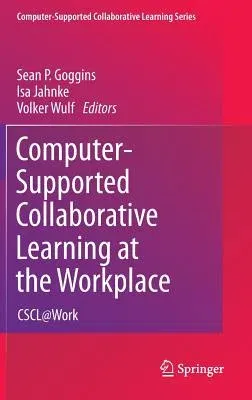This book is an edited volume of case studies exploring the uptake and
use of computer supported collaborative learning in work settings. This
book fills a significant gap in the literature. A number of existing
works provide empirical research on collaborative work practices (Lave &
Wenger, 1987; Davenport, 2005), the sharing of information at work
(Brown & Duguid, 2000), and the development of communities of practice
in workplace settings (Wenger, 1998). Others examine the munificent
variation of information and communication technology use in the work
place, including studies of informal social networks, formal information
distribution and other socio-technical combinations found in work
settings (Gibson & Cohen, 2003). Another significant thread of prior
work is focused on computer supported collaborative learning, much of it
investigating the application of computer support for learning in the
context of traditional educational institutions, like public schools,
private schools, colleges and tutoring organizations. Exciting new
theories of how knowledge is constructed by groups (Stahl, 2006), how
teachers contribute to collaborative learning (reference to another book
in the series) and the application of socio-technical scripts for
learning is explicated in book length works on CSCL. Book length
empirical work on CSCW is widespread, and CSCL book length works are
beginning to emerge with greater frequency. We distinguish CSCL at Work
from prior books written under the aegis of training and development, or
human resources more broadly. The book aims to fill a void between
existing works in CSCW and CSCL, and will open with a chapter
characterizing the emerging application of collaborative learning
theories and practices to workplace learning. CSCL and CSCW research
each make distinct and important contributions to the construction of
collaborative workplace learning.

